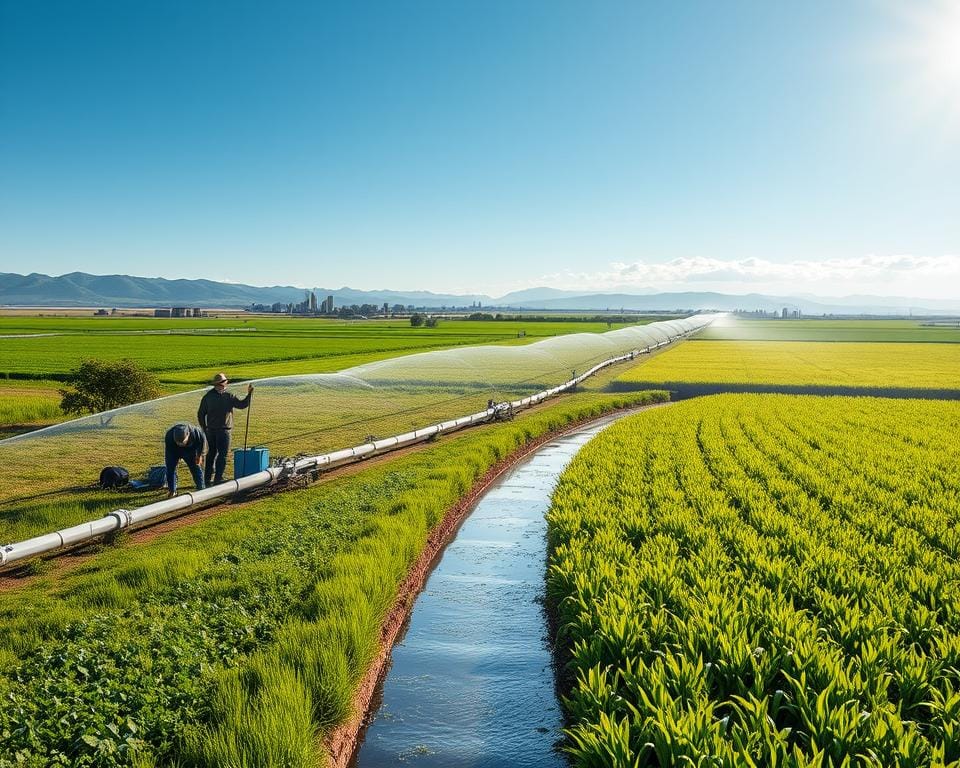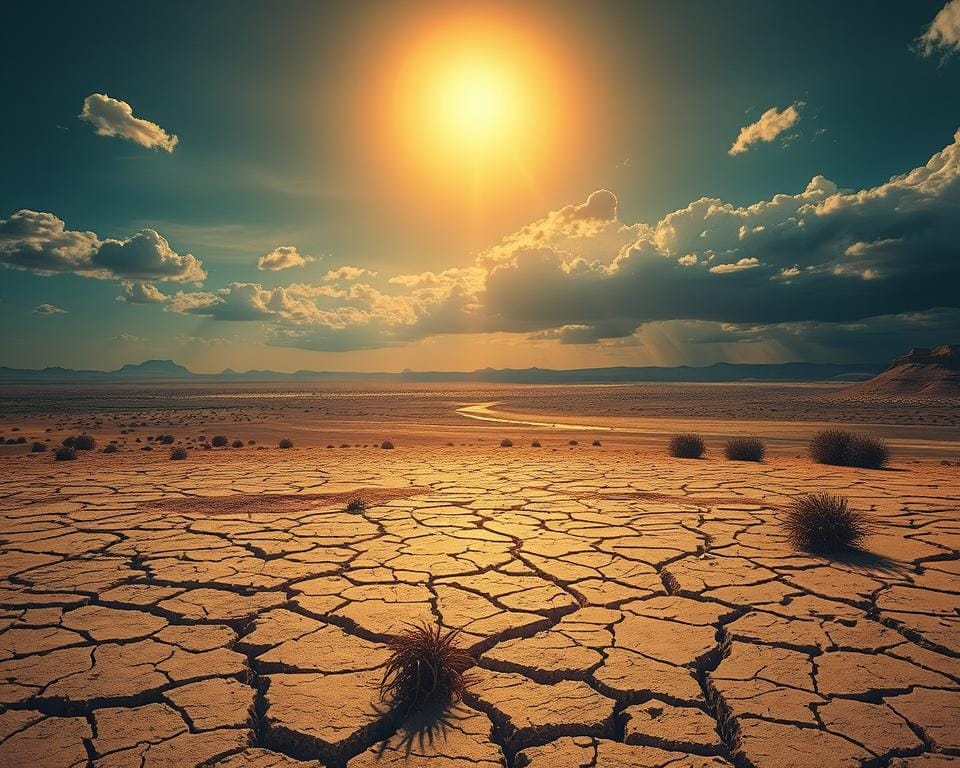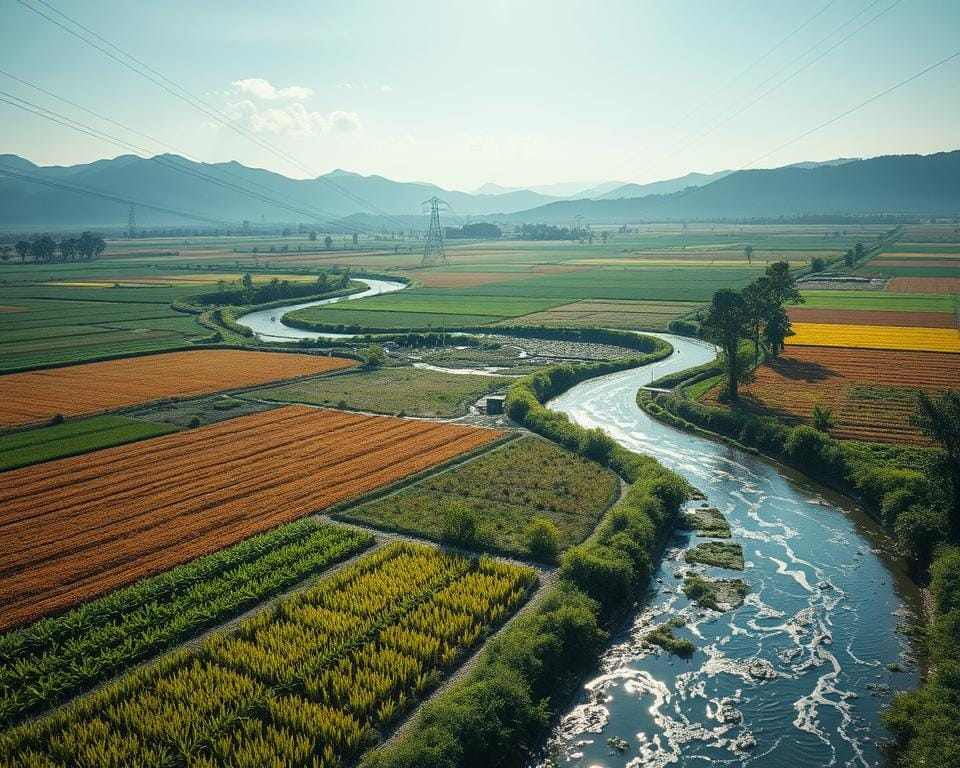Fortune magazine suggests water might become as important as oil for wealth. It’s crucial we look into water policy in farming. With global heat increasing and water getting scarce, we need to act together. We must focus on U.S. water policies, invest in farming advances, and refill our water reserves.
The National Oceanic and Atmospheric Administration (NOAA) reports record heat and disasters. These changes are reshaping our economies and costing farmers billions each year. Farming consumes up to 80% of our freshwater, challenged further by hotter weather and lower snow levels. As a response, the Biden-Harris administration is working on comprehensive water strategies. These are vital for supporting farming amid climate change.
Our water resources are under pressure, making sustainable farming critical. About 70% of freshwater is used for agriculture. This includes irrigation, livestock care, and food preservation. To feed more people by 2050, agricultural output must grow by 70%. By adopting sensible water management, everyone can have enough water. This will help us produce more while saving water and energy.
Introduction to Water Rights in Agriculture
Agricultural water management heavily relies on water rights. These rights are key to tackling water shortage in agriculture. They also ensure water is used wisely in farming. The history of water rights includes many laws and rules. This history teaches the importance of managing our crucial water resources.

Definition and Importance
Water rights allow people to use and manage water for farming. They help make sure water is used sustainably in agriculture. This is vital for dealing with the growing issue of water shortage. It also supports food security and keeps ecosystems healthy.
Historical Context
In the U.S., water rights history varies by region due to different needs and weather. In the east, water rights come from owning land next to water. But in the dry west, rights are given to those who first used the water well. These rules help shape how we manage water in agriculture today.
Current Challenges
Today’s farms face many problems like climate change, making water even scarcer. Updating our water rights systems is crucial to improve farming. Oregon, for example, is adapting its irrigation to focus on key crops. This helps reduce water use. Also, new tech like sensor-controlled sprays helps save water and control pests.
The Biden-Harris administration is working on a new water policy. This effort shows the need to change how we use water in agriculture. It aims to make farming more sustainable and address the water shortage issue.
Types of Water Rights
Water rights in the United States vary quite a bit. They reflect our history, geography, and laws. From the green, water-rich eastern states to the dry west, understanding water rights is key for managing it wisely.
Riparian Rights
In the eastern U.S., riparian water rights are common. If your land touches a water body, you can use the water. Yet, you must use it wisely and not hurt those downstream. New York follows these rules to keep water use fair.
About ten states let landowners use as much groundwater as they want. But, states like California share groundwater fairly, based on land size.
Prior Appropriation
The west follows the “first in time, first in right” rule because water is rare. This rule gives water rights to the first ones to use it. They must use it well and keep using it. Utah and Colorado follow this for both groundwater and surface water.
Some states, like Arizona, have changed rules to help save water. This was to face droughts and shortages. The federal government and Native American tribes also have water rights for their lands.
Hybrid Systems
Some states blend riparian and appropriation doctrines to meet their water needs. They strive for flexibility to cope with changing water supplies and demands. These states have custom rules for groundwater and surface water.
Ohio and Wisconsin, for example, follow the Restatement (Second) of Torts for groundwater. This promotes reasonable use without harming others. Water rights leases also vary, helping sectors like farming and cities to use water wisely. Learn more about how water use affects various areas by visiting this helpful resource.
| State | Groundwater Rule |
|---|---|
| New York | Reasonable Use Doctrine |
| Ohio | Restatement (Second) of Torts |
| California | Correlative Rights Doctrine |
| Utah | Prior Appropriation Doctrine |
The Impact of Climate Change on Water Resources
Climate change is hitting our water sources hard. With prolonged droughts and extreme heat, our planet’s rising temperature takes a toll. This issue is very clear in farming, where water is key for crops.

Drought and Heat Waves
Climate change brings more droughts and heat waves. Warmer air means more water vapor, which can lead to heavy rains. But, this rain doesn’t fall evenly, causing dry periods in many places. This makes it tough for farmers to keep crops growing steady. The connection between climate changes and different rain is clear.
Changes in Snowpack and Reservoir Levels
One big problem is the drop in snowpack levels. In the Northern Hemisphere, warmer weather means less snow. This means less water in reservoirs for crops. The drop in snowpack is linked to less water available, worsening drought and climate conditions.
Shifts in Plant Hardiness Zones
Climate changes are also affecting what crops can grow where. Rising temperatures and new rain patterns mean farmers have to think hard about what to plant. This big change can hurt the economy and forces a rethink of farming methods. With more heat, water resources are under even more stress, showing how climate change and water are connected.
| Climate Change Effects | Impact on Water Resources |
|---|---|
| Increased temperatures | Higher evapotranspiration rates, leading to water loss |
| Altered precipitation patterns | Uneven water distribution, causing droughts and water scarcity |
| Reduced snowpack | Lower reservoir levels impacting irrigation |
| Shifts in plant hardiness zones | Necessitates changes in crop patterns and agricultural practices |
Water Rights in Farming
Farming needs water rights to keep growing food. In places like the Western U.S., a specific rule called “first in time, first in right” is very important. It helps decide who gets water first, which is crucial in times of drought. Knowing this rule helps farmers manage water better and follow the law.
The Doctrine of Prior Appropriation
This rule is key for farmers when water is scarce. If you claimed water rights early, you’re ahead during dry spells. This matters a lot in certain areas where rules are strict. For instance, in Water District 2, 24 farmers were warned about possibly breaking water rules. There’s also a program in the Imperial Valley that pays farmers to use less water. This shows how crucial it is to understand and follow these water laws.
Surface Water vs. Groundwater Rights
Surface and groundwater rights are different. If you own land near a river, you might have the right to use that river water. Getting rights to use groundwater is harder and can take a long time, sometimes over a year and a half. If you have a small well, you might not need a permit for watering your garden. But, some people use water without the right permit. Trying alternatives like dry farming or using greywater can also help.
Policy and Legal Framework
Making sure laws and policies work well for water use in farming is key. Oregon is thinking about stricter rules for using groundwater because of droughts. They’re listening to people’s opinions until May 31, 2024. FoFF wants rules that consider environmental risks and fair access to land. The Imperial Irrigation District is working to save water from the Colorado River. This shows the balance needed between using water wisely and keeping farms productive. To learn about following water laws and farming sustainably, click here.

